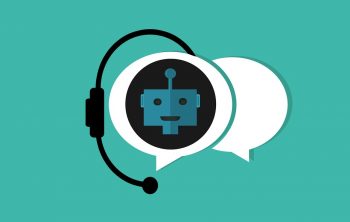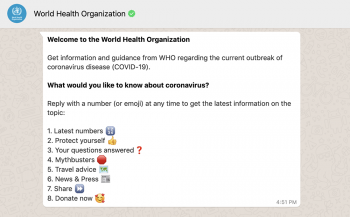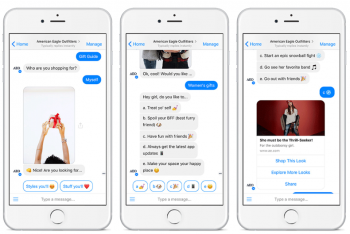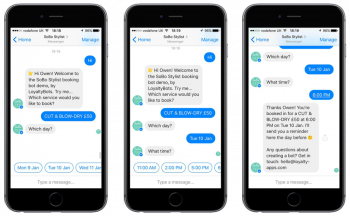
“The global chatbot economy will reach $1.25 billion by 2025.” – Grand View Research
AI-powered chatbots have evolved over the past few years:
– From being mere basic text-based chat windows to full-fledged and versatile virtual personal assistants.
– From answering simple “Yes/No” questions to answering questions in the right context and with flair.
– From having basic functionality and uni-dimensional user interface to converting into advanced, innovative, and interactive conversational chatbots.
And finally, from seeming robot-like to more and more human-like – Clearly, the chatbot growth journey has been one that’s peppered with the integration of digital tools and smart technology, extraordinary advancements in messaging apps (think: Whatsapp, WeChat, etc.), wide-spread seamless adoption of emerging technologies, and unparalleled success.
Did you know that the term ‘chatbot’ finds its roots in the term – Chatterbot – coined by Michael Mauldin in 1994.
In this blog, we will look at how your customer support team can leverage this all-powerful technology by looking at real-life examples for some serious inspiration. Let’s jump right in.
Top-6 Ways in which Chatbots can Boost Customer Retention

- Ability to convert website visitors into ‘leads’ by providing real-time support.
- 24*7*365 availability for customer support leading to saved time for human agents.
- Ability to accumulate customer feedback and assist in customer follow-up.
- High customer reach and engagement due to enhanced speed and efficiency in query resolution.
- Capability to win-back lost customers with exceptional customer experience.
- Ability to cut operational costs by up to 30%, leading to higher revenue.
A 360-Degree Approach to Achieving Stellar Customer Support
1. Implementing Interactive & Entertaining Chatbots
As the name suggests, conversational chatbots can imitate human conversations in a natural, free-flowing manner. What’s more, the use of value-adds such as emojis, funny clips, language preferences, etc. works wonders in personalizing the customer-company support interactions. In my opinion, chatbots that can catch typos, understand the jargon, and read between the lines are the ones that garner every customer’s imagination and unconditional support.
Let’s look at a real-life example to understand this better:

However, the magic does not end there; the bot comes with in-built interactive ‘food-themed’ quizzes to engage and entertain the users in equal measure.
The result: The brand witnessed a 47% increase in incoming messages and a staggering reduction of response time rates by 76%.
2. Reacting to Customer Queries within Seconds
“37% of people use a customer service bot to get a quick answer in an emergency.”
Just as yoga is a game of inches – the customer experience field is a game of seconds or rather 40 seconds to be exact. And in a time where the world is right in the thick of a global pandemic, offering solutions within seconds can literally be a matter of life and death.
The World Health Organization’s Whatsapp-exclusive bot is an interesting case in point. This bot offers reliable information in a speedy manner:

Notice how the free bot makes use of emojis and keywords in an attempt to better speak the user’s language. More importantly, it is available 24*7 and acts as a treasure trove of the latest news relating to COVID-19.
3. Requesting Testimonials & Feedback from Customers:
Believe it or not, but conversational chatbots are actually programmed to continuously learn from every interaction – be it in the form of the existing knowledge base or from reviews as well as feedback that the customers provide upon request:


Key takeaway: If you wish to improve your chatbot’s quality of conversation and output, gathering customer feedback is extremely important. In that context, here’s a handy tip: Offering a pre-determined list of options can encourage customers to take the survey instead of asking them to ‘type out’ the answers.
4. Advertising Product & Services through Chatbot Technology
The integration of popular social media platforms such as Facebook Messenger, Snapchat, etc. with chatbot technology is allowing brands to seamlessly connect with users – offering convenience as a prime differentiator. Take American Eagle Outfitter’s chatbot, for instance:

The chatbot uses humor and fun to promote products and engage customers in a sustainable manner. That’s not all. The chatbot also makes excellent use of memes, GIFs, images, you name it, taking the conversation to the next level. Based on the audience’s interest and user responses, the conversational bot offers practical advice and tips.
5. Providing Customer Service Outside of Business Hours
The ‘always-on’ global customer of today is consistently online – and expects brands to be digitally-connected to them as well. It is no longer sufficient to address user concerns during business hours, and hence, companies need to be able to handle customer support operations outside of the business’ time zone.
In fact, the need of the hour is to provide high-quality, universal support to users – be it at 5 am or 4:13 pm; on a Tuesday or a Sunday; via emails or through chat support, you get the drift, right?
6. Collecting User Data
As with every conversation in human existence, offering ‘contextually-aware’ responses is key to driving positive user experience. This is where chatbots come in handy. By gathering critical data such as demographics, user behavior, communication history, etc., chatbots can offer relevant and insightful responses to user queries and concerns. Plus, with accurate data at-hand, chatbots can be used to create on-point user personas and drive an effective marketing strategy.

This conversational chatbot managed to achieve what most brands dream of achieving with AI technology, in months, if not years:



Key takeaway: The central idea is deceptively simple. Customers like to interact with chatbots that are easy-to-use, conversation-driven, and not command-friendly, and ones that can actually offer useful advice/tips. You can achieve all this and more by gathering content as it enables conversations and helps capture user context.
7. Sharing ‘Thank You’ Greetings with Users
As we saw above, chatbots can tailor messages and deliver responses based on the user’s response. You’ll be surprised to know that a simple ‘Thank You’ message or any message of appreciation goes a long way with customers – whether they’re first-time users or existing users:

Notice how the bot ‘thanks’ the user for providing all the information so that the chatbot can offer a seamless user experience.
Key takeaway: At every juncture of customer touch-points in your chatbot journey, look for windows of opportunity to appreciate your users and get one step closer to delivering a delightful chatbot experience.
Closing Thoughts: Conversational Chatbots are Flexible, Functional, & Value-Driven

“85% of customer interactions will be handled without human agents by 2021.”
The conversational chatbots of today may not be able to replace human intelligence or effort, nor is it their job to do so. They can, however, help customers self-serve, make smarter and speedier decisions, and communicate with purpose. You can think of chatbots as the Hobbes to every Calvin, the J.A.R.V.I.S to every Iron Man, and the muscle to every human brain. In fact, for most millennials, chatbots can be thought of as a natural extension of texting.
All things said and done, conversational chatbots can take off some of the workload, make space for your human agents to cater to more complex problems, and address routine customer queries with a pinch of friendliness and humor. In short, these conversational bots work best when used in conjunction with human intuition and intelligence, and not as a substitute. Thoughts?
p.c.: https://pixabay.com/illustrations/chatbot-bot-assistant-support-icon-4071274/
https://www.userlike.com/en/blog/best-chatbots
https://www.getjenny.com/blog/chatbot-use-cases-25-real-life-examples
https://www.wordstream.com/blog/ws/2017/10/04/chatbots



